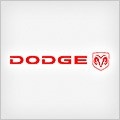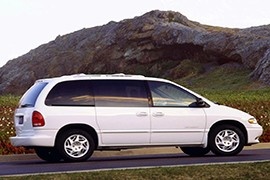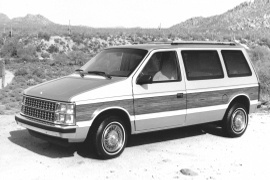
DODGE Caravan
Generations Timeline, Specs and Pictures

The fifth generation of the Dodge Caravan was released at the 2007 North American International Motor Show and it was available only in the long-wheelbase version.
MPVs were one of Chrysler’s specialties and proved once again with the introduction of the 2008 model Dodge Grand Caravan. After four generations when it was built in two lengths, the car-manufacturer has decided to do it in only one size to fits all. For some markets, it was available with a European diesel engine.
From the outside, one of the biggest improvements was done for the headlights, which were taller than before. The styling stepped away from the SUV-like shape of other manufacturers and adopted a more docile MPV-look, with a squared bodywork and rounded wheel arches.
Inside, the Grand Caravan was equipped with three rows of seats. The middle row could have been folded down and stowed into the floor. The third row was removable and with all these out of the way the MPV was quickly transformed into an LCV. For the second and third-row there was an option for DVD players mounted on the ceiling, with individual programs running on the screens and headphones.
The fifth-generation lost the AWD option from its predecessor and was available only as a front-wheel-drive. Apart from the 3.3-liter V6 unit which was mated to a 4-speed automatic transmission, all the other four engine options were mated to a 6-speed auto.

The fourth generation of the Caravan saw the lights at the 2000 North American International Auto Show in Detroit.
The minivan didn’t live long under the Dodge brand.
Families use minivans for long trips and, mostly, used by moms to take and pick up kids from their schools. At least, that’s what they were back in the days when the MPVs were in high demand. Later on, the trend moved toward crossovers and SUVs. But in 2000, the MPV was the king of the school’s parking lots.
From the outside, some might said that the fourth generation was more of a facelifted third generation. But the vehicle was completely new, and it was built on the Chrysler RS platform, unlike its predecessor, which was built on the NS. Its raked front end with the hood almost continued by the windshield and the long, curved roofline, the Caravan featured a dynamic design even though it wasn’t built for speed. The aerodynamic played a more important role in fuel efficiency.
Like many other MPVs on the market, the vehicle was designed from the inside out. The short wheelbase was the Caravan, and the long-wheelbase was the Grand Caravan. It could host up to seven passengers inside, or just six if the middle row was fitted with captain seats.
Under the hood, Chrysler installed a choice of two engines. A 2.4-liter four-pot and a 3.3-liter V6. The standard transmission was a 4-speed automatic gearbox.

Dodge introduced the third generation of its large MPV, the Caravan, in 1995 along with its sibling, the Chrysler Town&Country, and it was available in two wheelbases.
There was a time when minivans were the primary vehicles seen at schools and filled Walmart’s parking lots. It was the best family car on the market, with car-like handling and room for five and loads of space in the back. Dodge offered the Caravan as a seven-seater as well.
Chrysler knew how important was aerodynamic for a car. After all, they made the Airflow back in the ’30s (and failed since people trusted body on frames more). That’s why it designed the Dodge Caravan/Chrysler Town&Country with a long and front area that started from the front bumper and ended on the roof. It was a continuous surface that formed an aerodynamic shape and helped the car cut through the air effortlessly. From its sides, the Caravan featured sliding doors on the curb-side, with an option for another one on the driver’s side. Later on, the carmaker included both of them on the standard features.
Inside, the MPV featured a car-like dashboard with rounded shapes. The seats were higher than in a regular sedan, but they ensured a comfortable ride. In the back, the Caravan was available with two rows of seats. The interior room was big enough to carry a 4x8 (1.2 x 2.4 m) plywood with the second and third seat rows removed. Also, the interior features list was long and comprised comfort and safety features.
Under the hood, Dodge installed a choice of four engines ranged from a fuel-efficient 2.4-liter up to a potent 3.8-lite V-6. The four-speed automatic transmission was standard on the entire range.

In 1987, Dodge introduced the long wheelbase variant of Caravan.
All trim levels produced were available in the LWB version starting with 1987. The difference between the regular Caravan and the Grand Caravan is the bigger cargo space behind the rear seats. The interior was pretty much borrowed from the Chrysler K platform. The car was available in three trim levels: Base, SE and LE.
It was the beginning of more safety measures, so Chrysler installed 3-point seat belts for the front two passengers and 2-point belts for the other. The vehicle was equipped with headrests only on the optional vinyl seats for the SE version and standard installed on the LE. Since the homologation was based on a utility van, the headrests were not mandatory. Anti-lock brakes or airbags were not installed on the vehicle.
The Grand Caravan was a good choice for contractors, who could use the vehicle for their work during the week and with the family in the weekends. The second row was sliding back and forth while the third row was removable, leaving a lot of space for cargo loads.
The available engines were between 2.2 liters and 3.3 liters, both running on gasoline. Dodge offered the vehicle with both manual or automatic transmission, but most of the Grand Caravans were with the latter.

Introduced in November 1983 as the 1984 model year, the Dodge Caravan was based on the Chrysler S platform, an extended derivative of the Chrysler K platform.
The original idea came from Lee Iacocca and Hal Sperlich during their earlier work at Ford where it was rejected. For the 1987 model year, a longer wheelbase was introduced, which was called the Grand Caravan. It was still based on the Chrysler S platform. Safety features consisted of 3-point seat belts for the front passengers and simple lap belts for the rear. Higher grade models were also coming with non-adjustable headrests.























































